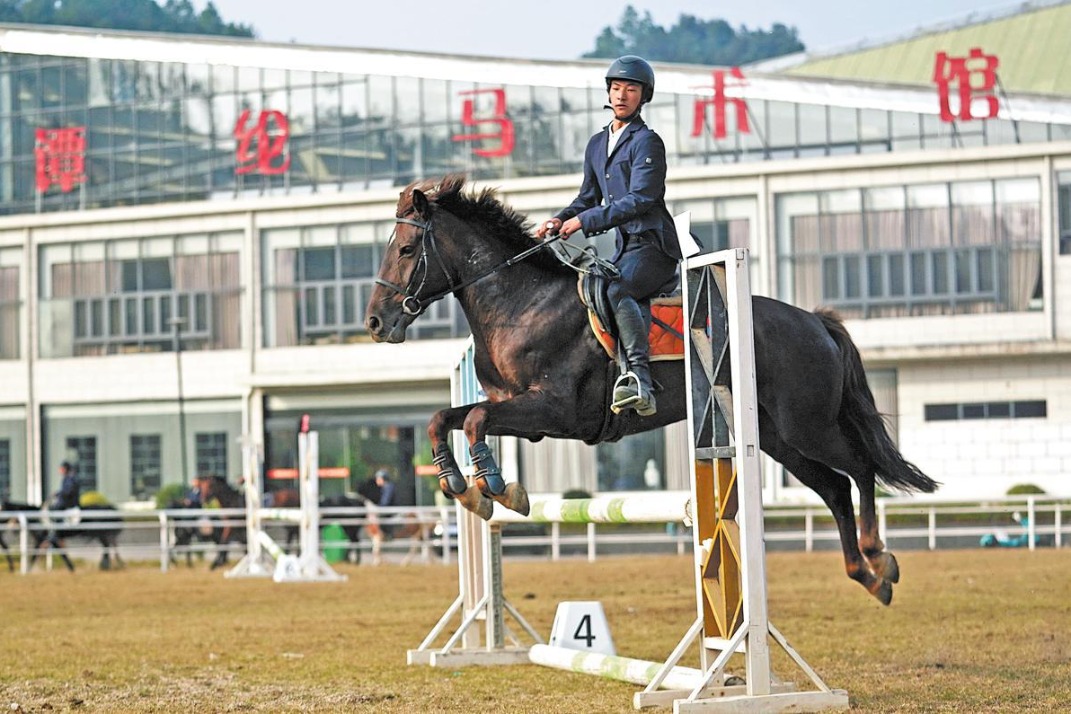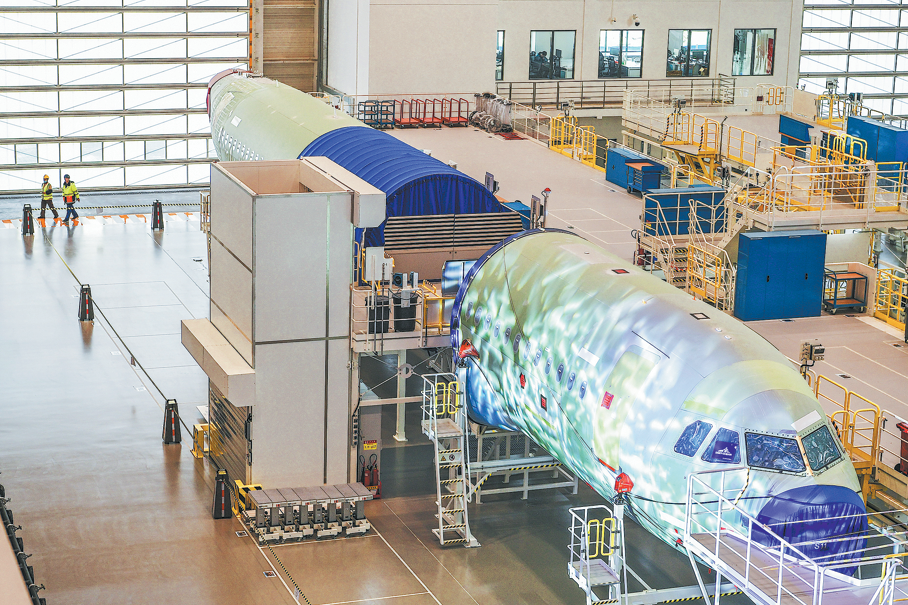Hong Kong gets down to the business of advanced air quality control

High-tech companies in Hong Kong are racing against time to develop sophisticated air quality control technologies to ease the city's businesses back to safe and risk-free office work.
Entering a spacious room at the Hong Kong Science and Technology Park where workers take breaks, visitors immediately encounter a wall of lush greenery and a whiff of grass, reminiscent of sodden soil.
The expanse of greenery gives the shared space a sense of vigor and vitality. At first sight, this wall could be dismissed as merely being a decorative feature. However, that is just part of the story-it also acts as an air purifier.
The IoT Active Greenwall is the brainchild of Bravolinear Tech, an incubation technology company based at the science park. It was built after a soil filter experiment conducted by NASA in 1989.
A related study acknowledged the "powerful capability" of plants to filter air pollutants through their roots and soil. Plant roots and associated microorganisms are adept at destroying pathogenic viruses, bacteria and organic chemicals, eventually converting all these pollutants into new plant tissue, a NASA report stated.
Alex Yeung, the founder of Bravolinear, said, "It (the wall) is basically a vertical application of NASA's discovery."
The soil used to pot a plant allows air to penetrate, while pollutants, including smoke, volatile organic compounds, PM2.5, bacteria, formaldehyde and fungus spores, are retained in the earth. The plant's roots then break up and absorb the trapped particles.
"According to a laboratory trial, this takes only one-third the time required for other purifying measures, with the same effect," Yeung said.
Plants chosen for such walls should have strong roots and be suitable for indoor cultivation, because the lighting, irrigation and ventilation are all artificial and computer-controlled, he added.
Such walls have been used in government buildings and by property developers.
"Amid COVID-19, we've received considerably more product orders. Awareness of indoor air quality has been heightened considerably," Yeung said.
Andrew Kung, Bravolinear's chief operating officer, said the conventional air filter fitted with the ventilation system needs replacing every three to six months, while the green wall purifier does not."
People spend 85 percent to 90 percent of their time indoors, whether in an office, at home or on transportation. As a result, indoor air quality is closely linked to health and well-being.
"It's high time employers, property managements and tenants invested more in enhancing indoor air quality," Yeung said.
After learning a hard lesson from the outbreak of severe acute respiratory syndrome in 2003, the Hong Kong government has made considerable efforts to underline the importance of indoor air quality, or IAQ.
That year, the city's Environmental Protection Department introduced the Certification Scheme for Offices and Public Places. By recognizing management practices that meet set criteria, the plan aims to encourage building owners to optimize IAQ.
Government-owned bodies in Hong Kong have also taken a lead in harnessing the latest technologies to achieve maximum efficiency in IAQ.
For example, the MTR Corp installed an air sanitizing system in 2010 at its two cross-boundary train stations-Lo Wu and Lok Ma Chau-where intense passenger traffic increases the chances of viral transmission.
The technology used was devised by Herman Tsui Yik-wai, technical director of Hygeatec, a local consultancy and solutions company.
Tsui, who is also a professor of mechanical and aerospace engineering at Hong Kong University of Science and Technology, said, "Even though there's an outbreak, we want to contain transmission of the virus between Shenzhen (Guangdong province) and Hong Kong. The technology is also deployed at the West Kowloon high speed rail station (which connects Hong Kong and the Chinese mainland)."
Since 2006, the technology has been employed commercially in Hong Kong and elsewhere. It is used in the control tower at Hong Kong International Airport and in medical care units and nursing centers, including Guangzhou No 8 People's Hospital in Guangdong. Its efficacy has been validated by the Shanghai Municipal Center for Disease Control during the COVID-19 outbreak.
Three air purification methods are commonly used, but they have some shortcomings.
Ionizers-electrical devices that pump negative ions into the air to freshen it-can trap airborne particles by adhering them to nearby surfaces, but they cannot eradicate microbes or neutralize volatile organic compounds.
Ultraviolet light is used to render microbes inactivate through photochemical reaction. While this demonstrates the effectiveness of disinfecting objects or surfaces that are touched frequently, the disinfection process is time-consuming.
Ozone-based air purifiers are reasonably effective, but only if used at high-intensity level, which comes with a risk of human health hazards.
In addition to purification, ensuring a sufficient supply of fresh air indoors is crucial to reducing virus and bacteria levels.
Mike Putnam, mechanical, electrical and plant pre-construction manager at Unispace, an international company providing business and commercial interior design solutions, said the general recommendation for outdoor air ventilation in a confined area is "the more, the better".
Yeung, from Bravolinear, said that while the Hong Kong government has made a conscious effort to promote public awareness of indoor air quality, there is a lack of enforcement.
Today's Top News
- Crackdown on Chinese firms politically driven
- Mainland denounces Taiwan-US trade deal as 'sellout pact'
- Steering Sino-US relations in the right direction
- Retired judges lend skills to 'silver-haired mediation'
- Are you ready for robots to roam your streets?
- Good start for new five-year plan stressed






























